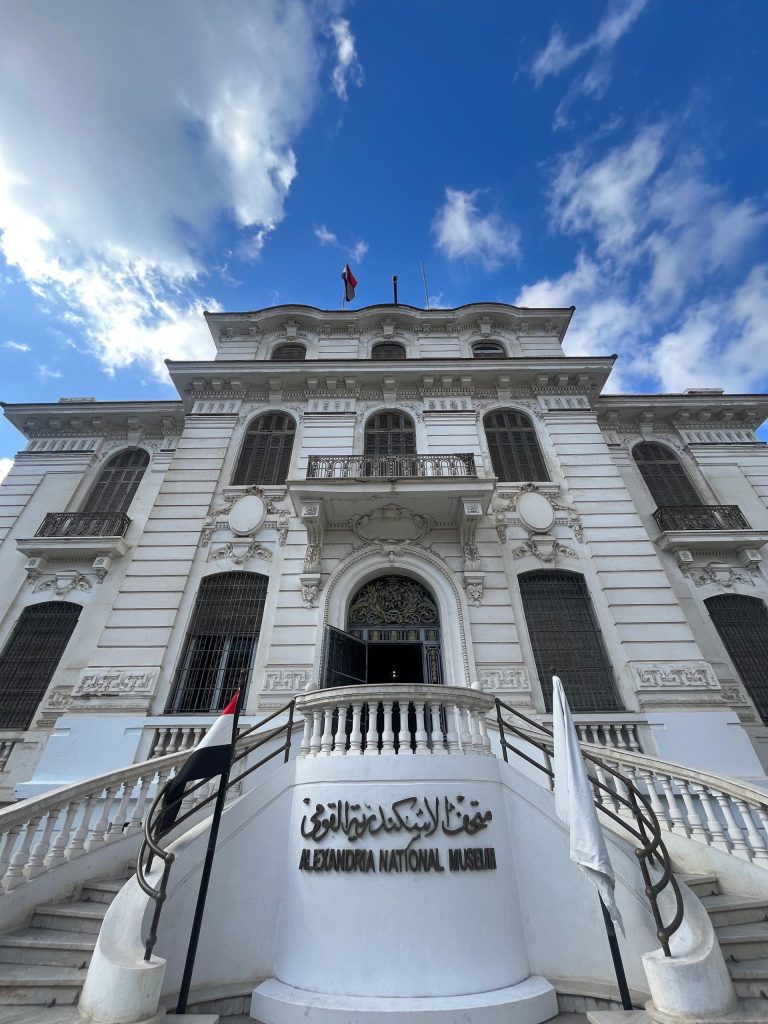Walking into the Alexandria National Museum, I was immediately drawn into the atmosphere of Secrets of the Sunken City. Running for six months, the exhibition opened a month ago, and already the buzz around it was undeniable.
With 86 artifacts lifted from the depths of Abu Qir Bay—remnants of Canopus, Heracleion, and the submerged royal quarter of ancient Alexandria—the show promised to unveil centuries of history hidden beneath the sea.
The Museum at Large
The Alexandria National Museum itself is divided into distinct sections—Pharaonic, Greco-Roman, Coptic, Islamic, and Modern. Within this structure, Secrets of the Sunken City stands out as a centerpiece, tying Alexandria’s many histories together through objects that the sea once kept hidden.
Throughout the halls, large posters guide visitors deeper into Alexandria’s layered past. They tell of the rise of Christianity, the executions of the Alexandrian church under Roman emperors, the discovery of the Roman Theatre at Tell Kom El-Dikka, and the grandeur of the Serapeum temple. These stories ground the artifacts in the city’s broader narrative.
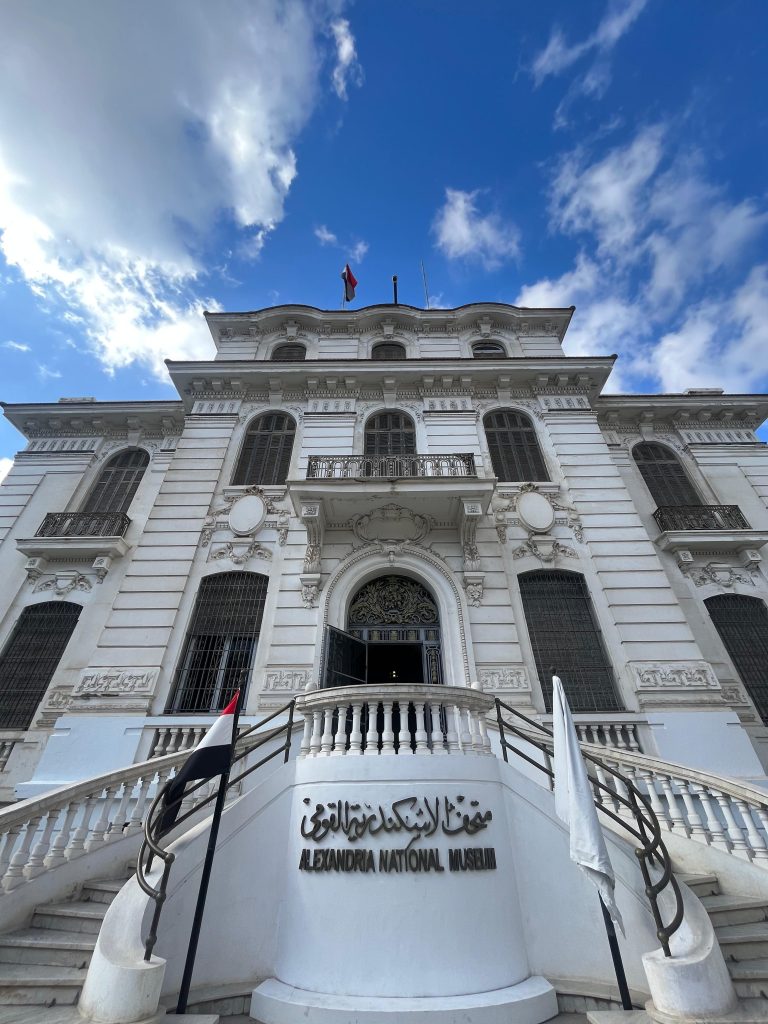
Underwater Excavations on Screen
One of the first things that sets the tone is the use of video. Large screens display divers slowly lifting statues and artifacts from the seabed, offering a behind-the-scenes look at how these treasures were rescued from their underwater graves. Next to them, a detailed map marks the exact locations of the discoveries, each numbered like a coordinate on a treasure chart.
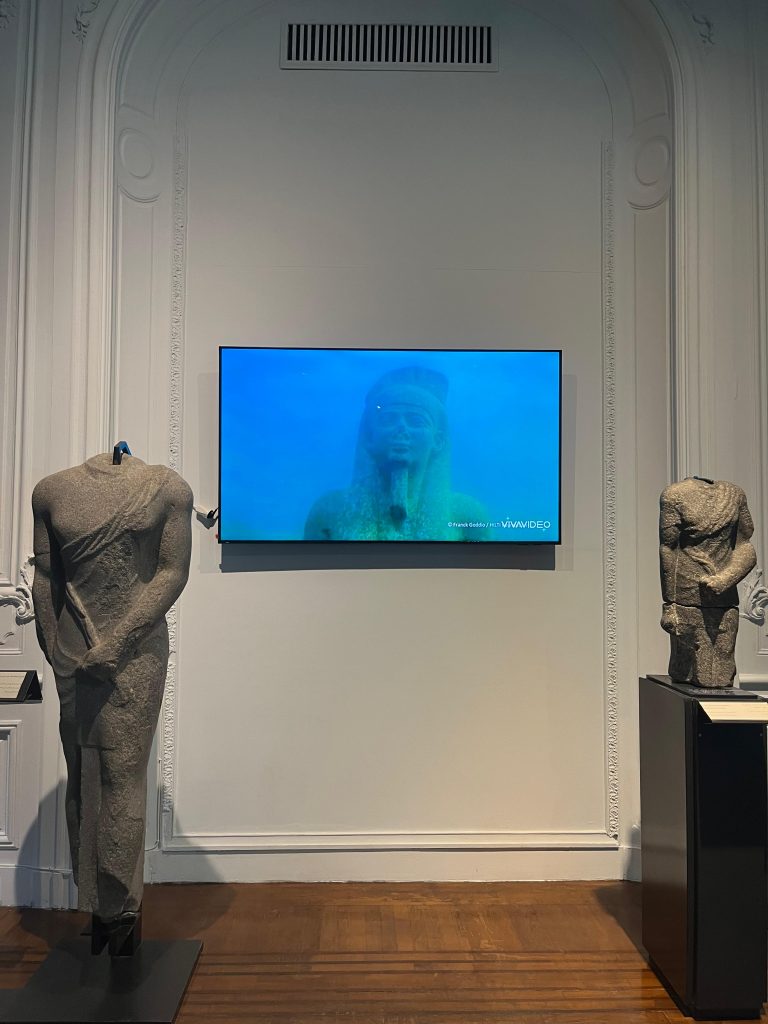
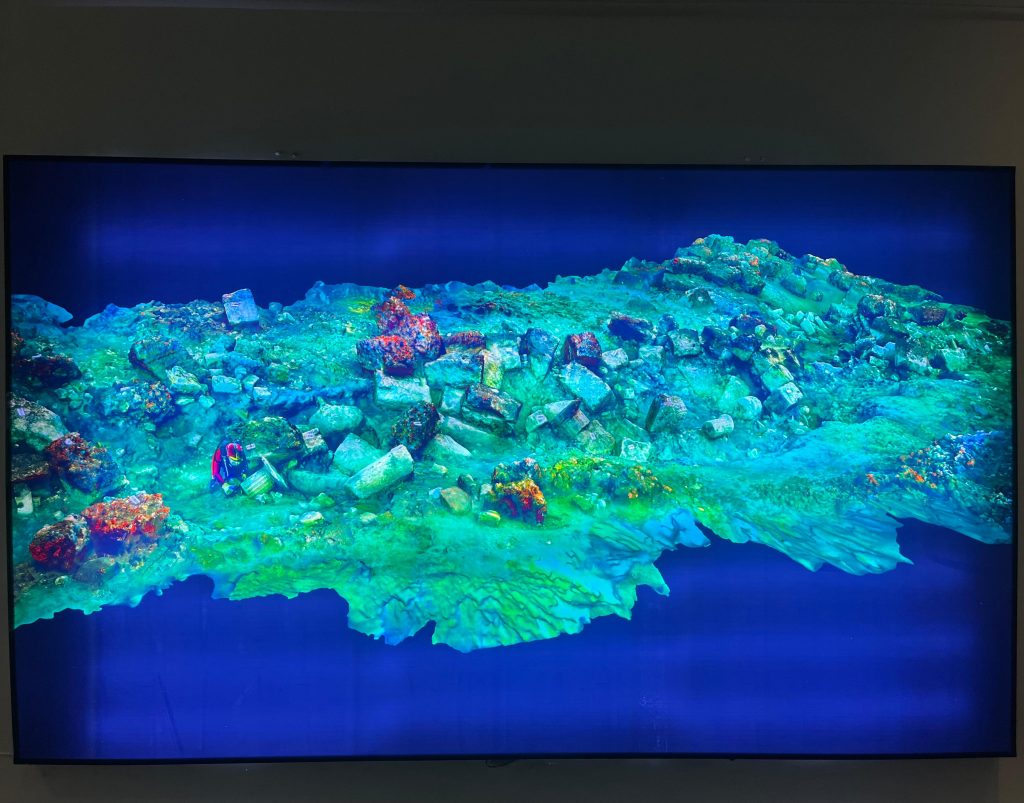
Submerged Then, On Display Now
Behind several artifacts, photographs show how they looked underwater—still half-buried in sand, bathed in the Mediterranean’s blue light. To see the same object before you, whole and restored, with its submerged image glowing behind it, creates a powerful contrast between loss and recovery.
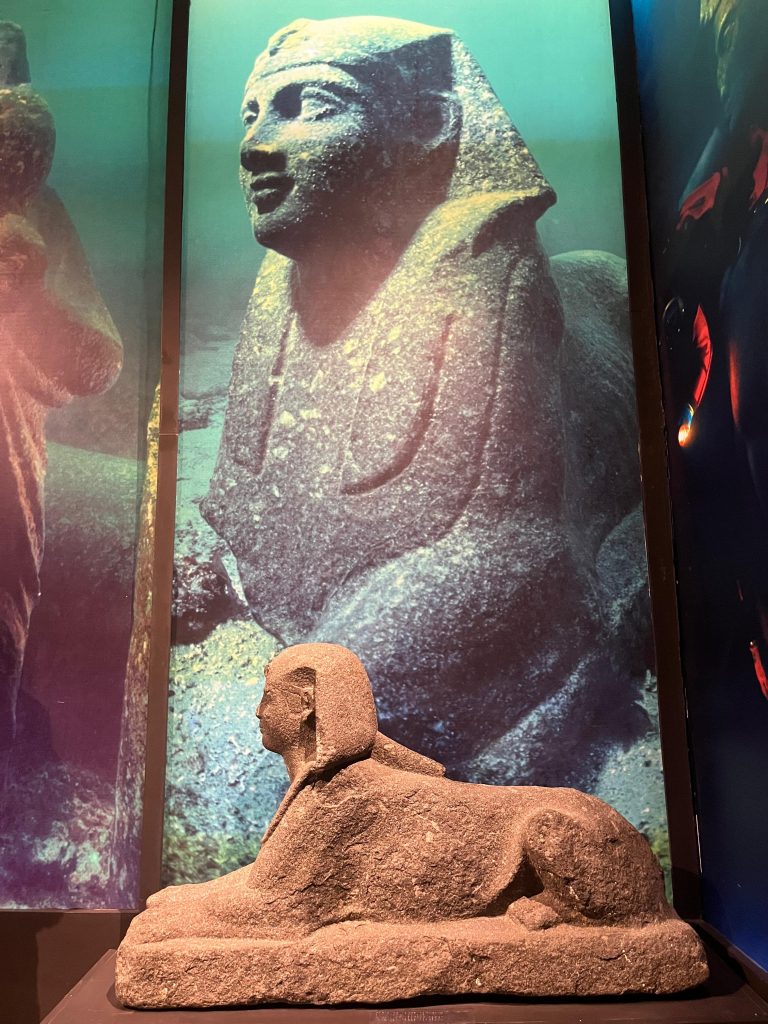
Inclusivity in Braille
Accessibility is built directly into the exhibition. Every label is not only written in clear text but also presented in Braille, making the experience inclusive for blind and visually impaired visitors. It’s a simple but significant addition, ensuring that more people can connect with this part of Alexandria’s heritage.
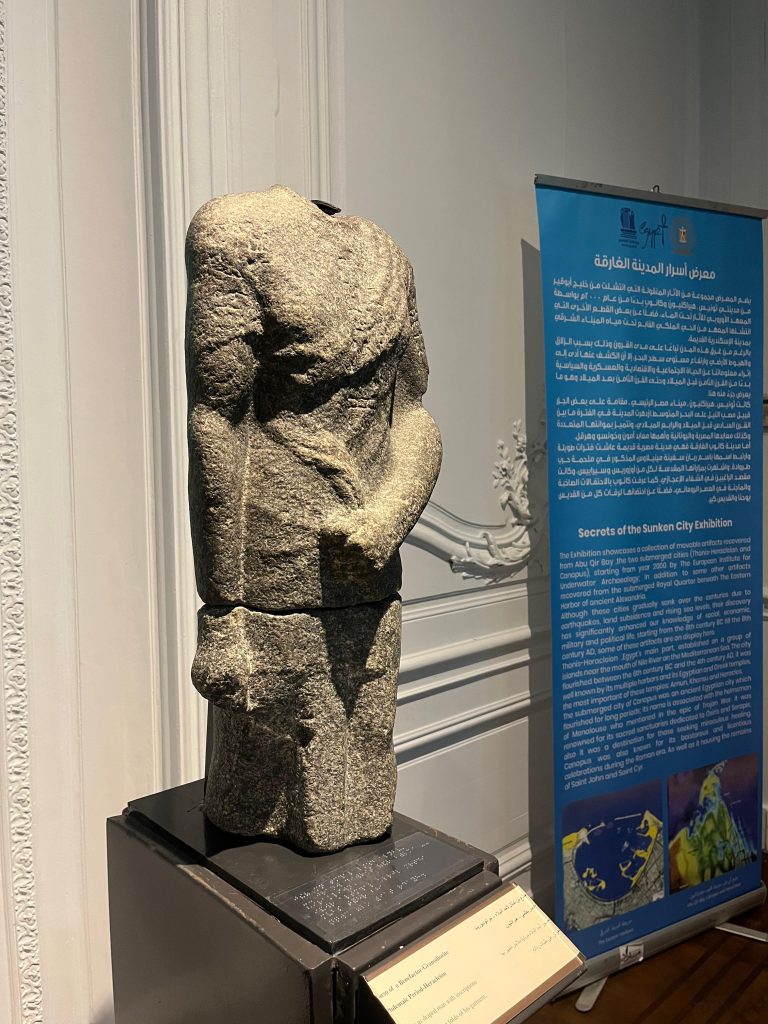
Highlights of the Exhibition
The Sphinx
One of the first pieces to greet visitors is a sphinx. Though its label notes cracks and missing fragments, the statue is astonishingly well-preserved. Its survival after centuries beneath the sea is almost impossible to believe.
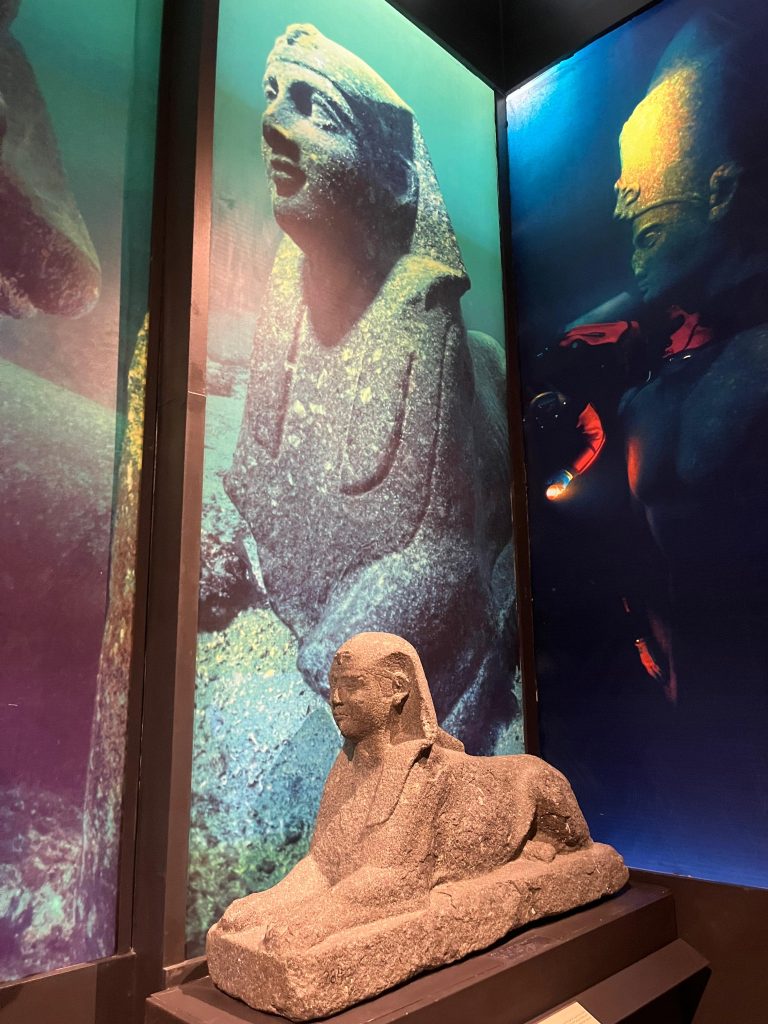
The Priest of Isis
Another striking highlight is a black granite statue of a priest of Isis. He holds a canopic jar figure of Osiris close to his chest, cradling it with such care that the gesture seems almost protective—stone carrying an unexpected sense of tenderness.
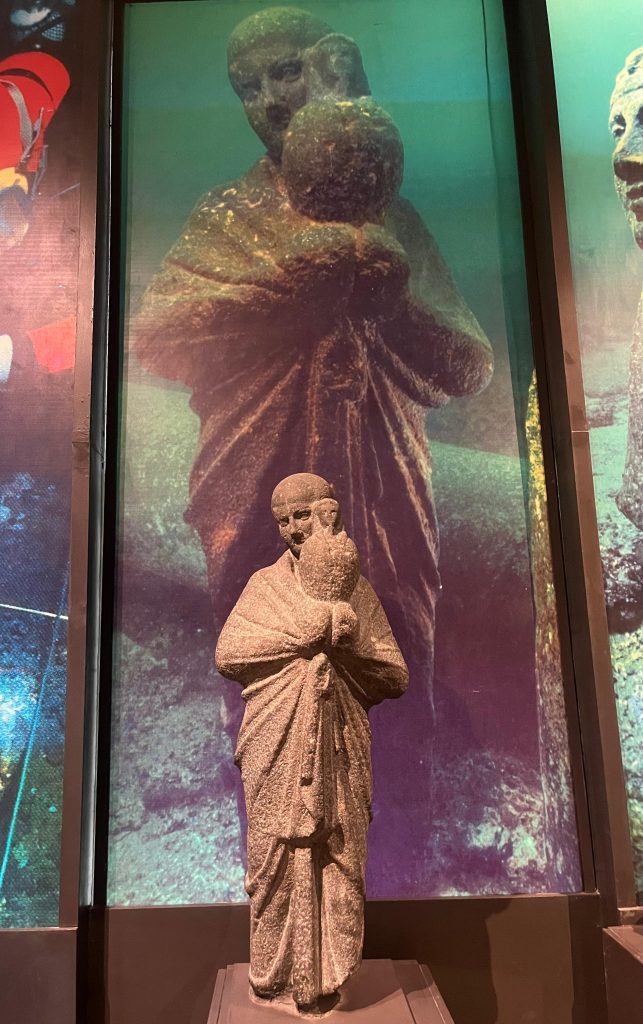
The Two Granite Heads
Displayed side by side are two granite heads. One bears a distinctive bulge on the forehead, suggesting traces of the uraeus, the royal cobra symbol once attached there. This small but telling detail hints at its royal origin.
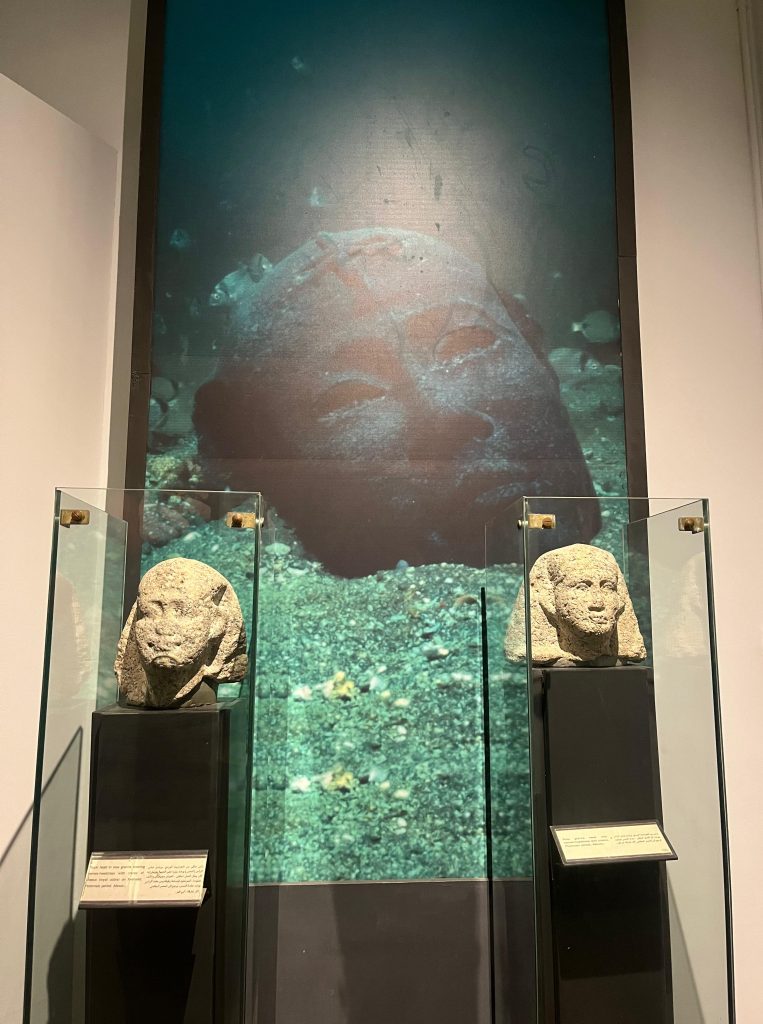
Horus With Human Ears
Perhaps the most unusual piece is a falcon-headed statue of Horus. Unlike his traditional form, this version includes long locks of hair and human ears—a stylistic change introduced between the 26th dynasty and the Ptolemaic period. The intent was symbolic: ears that could hear the prayers and invocations of his worshippers.
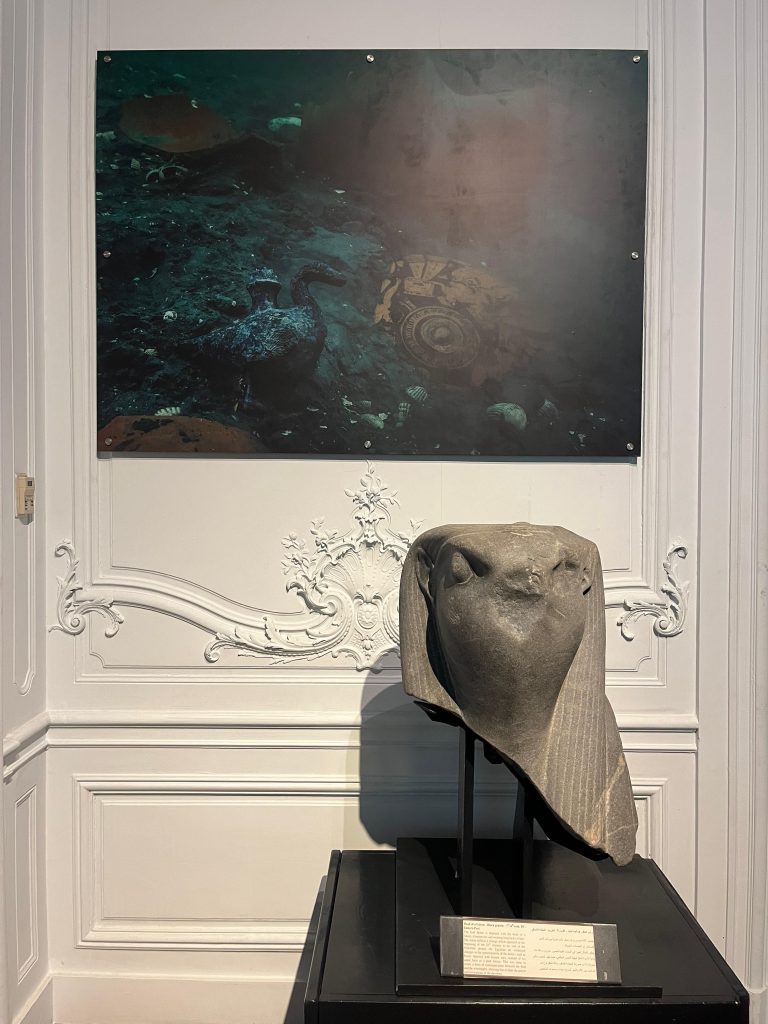
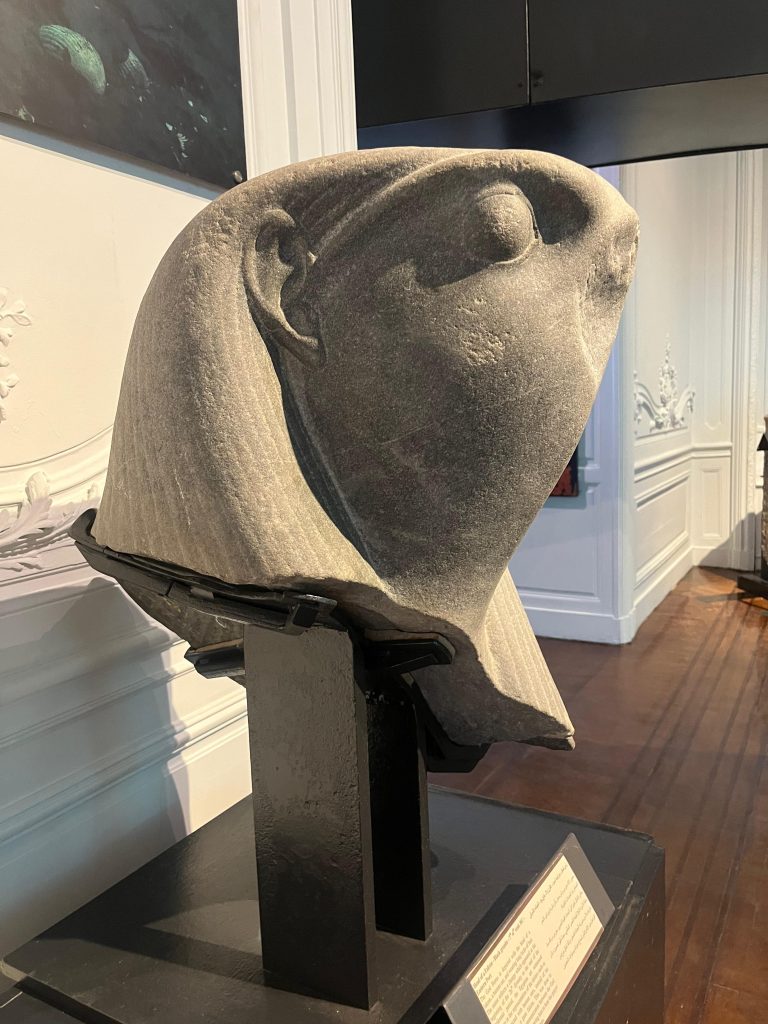
Coins and Jewellery
The exhibition also brings together smaller but equally fascinating artifacts: bronze, silver, and gold coins featuring Alexander the Great and Greek gods, as well as jewellery, including a wedding ring. These intimate items add a human dimension to the grander statues.
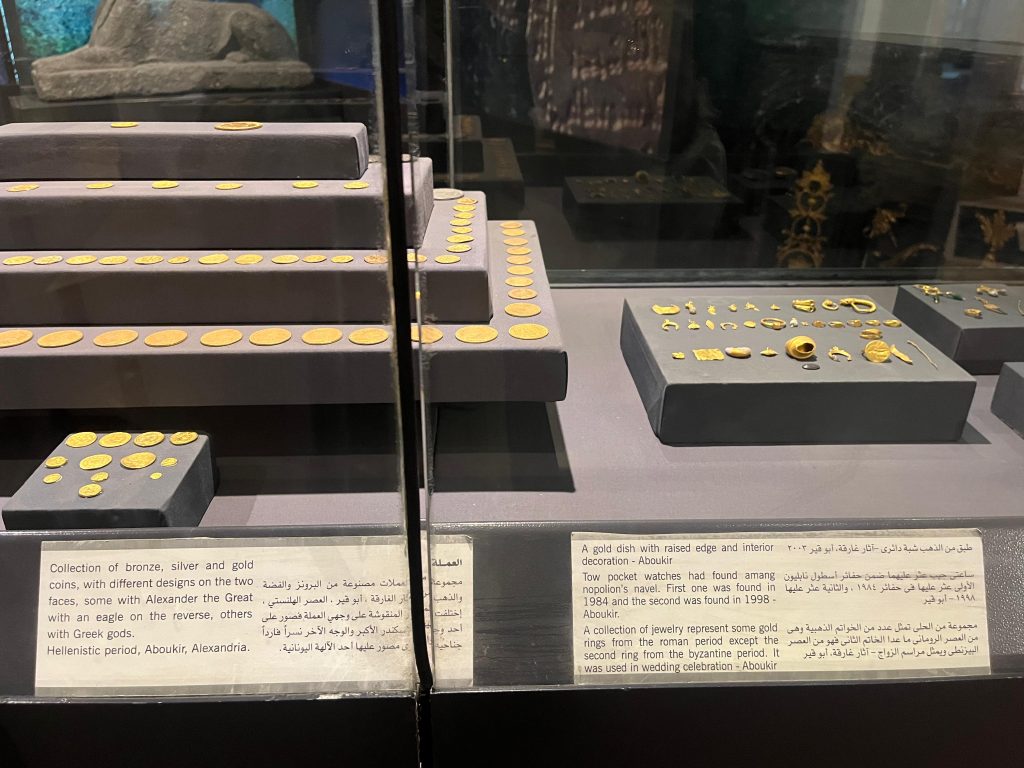
Beyond the Sunken Cities: The Museum’s Permanent Collection
While Secrets of the Sunken City is the current centerpiece, the Alexandria National Museum’s permanent collection enriches the experience with treasures from across the city’s history.
Serapis, God of Alexandria
The statue of Serapis, Alexandria’s chief deity, shows him with Greek-style curls and a heavy beard—a perfect symbol of the city’s blend of Egyptian and Hellenistic culture. It hints at the grandeur of the Serapeum temple that once towered over Alexandria.
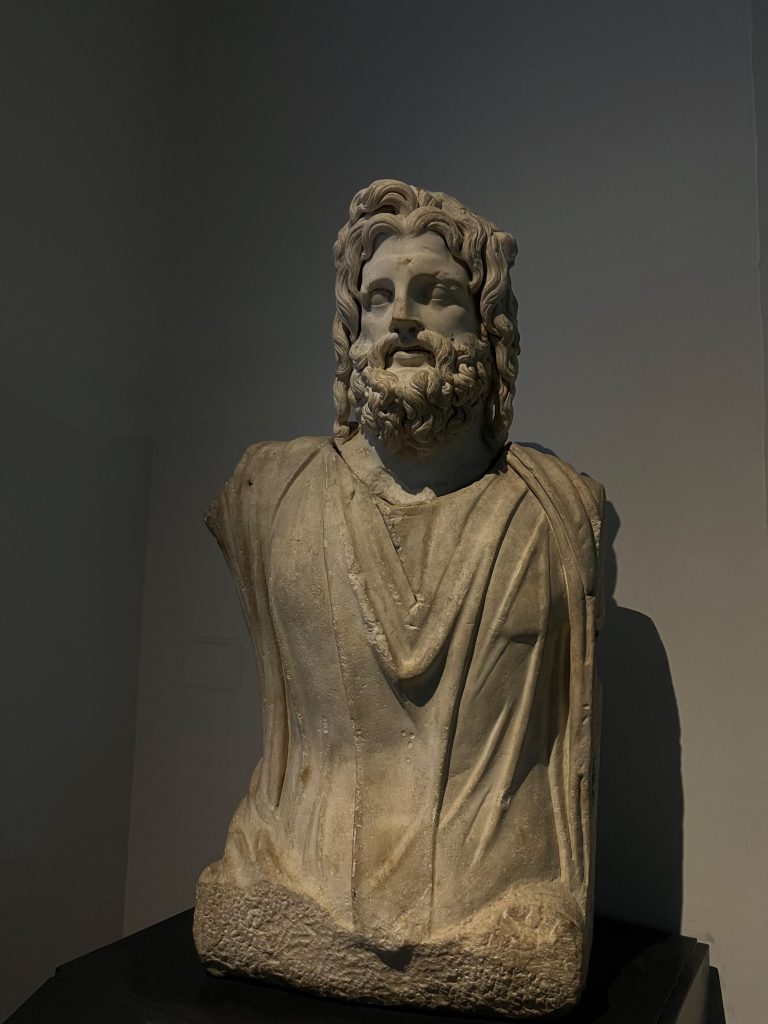
A Roman Emperor in Marble
A statue of a Roman emperor, preserved from the waist down, impresses with its fine carving. The folds of the toga suggest it was crafted in one of Alexandria’s own workshops, proof of the city’s artistic skill under Roman rule.
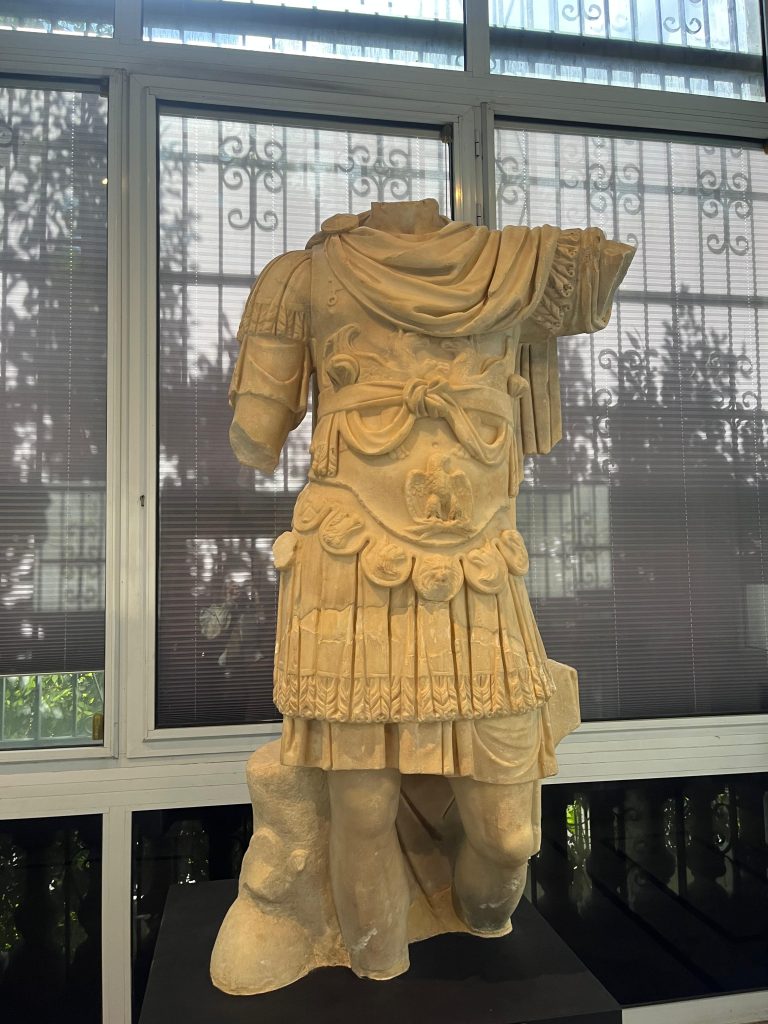
The Mummy of the God Apis
The museum also holds a small mummy of the sacred bull Apis, worshipped as a living god. Though modest in size, it captures Egypt’s enduring devotion, where even animals embodied divine presence.
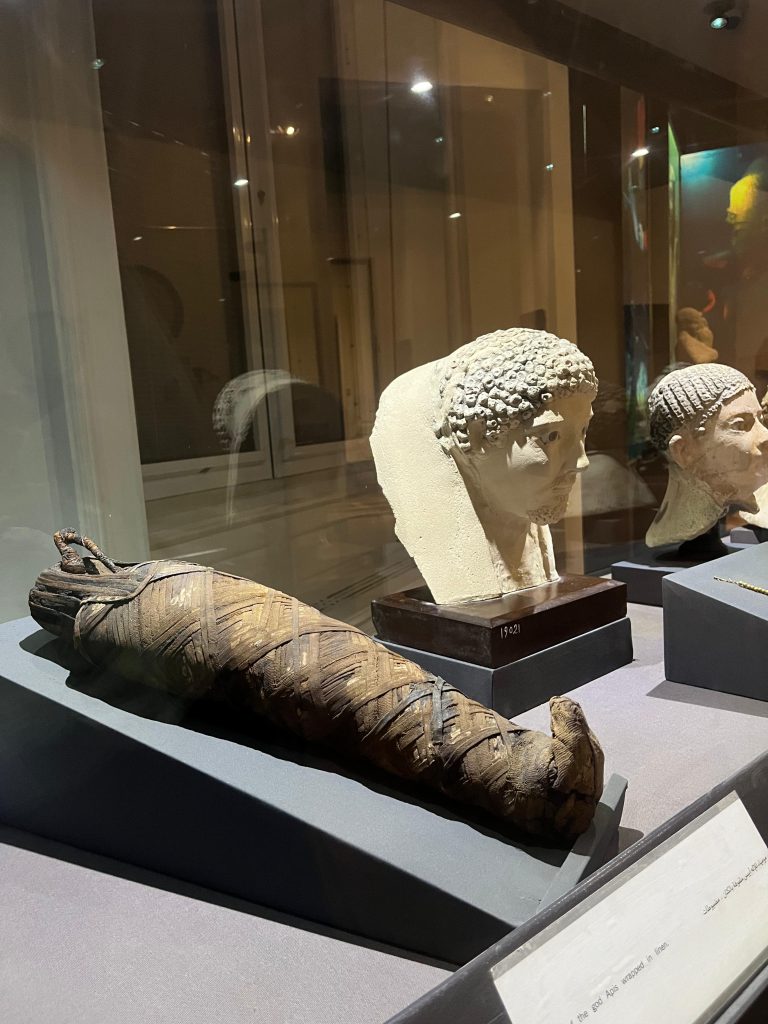
A Global Audience
Foreign tourists from all over the world wandered the galleries and were drawn into the museum by the intrigue of the sunken cities. Many spoke of the mystery of Alexandria, its mix of East and West, and the fascination of seeing its lost heritage revealed.
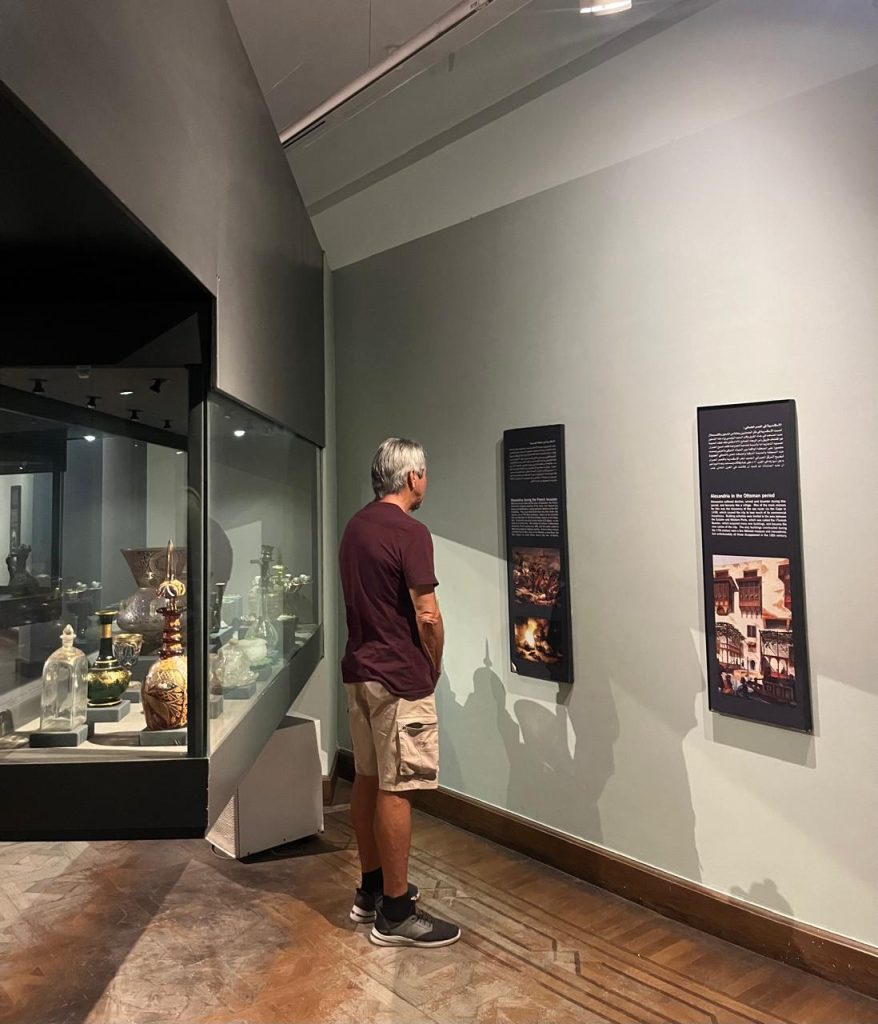
Leaving With Wonder
By the end, Secrets of the Sunken City felt more than an exhibition—it was a resurrection. The combination of atmosphere, inclusivity, artifacts, and the larger museum context made the experience immersive and memorable. Standing among objects that had survived centuries beneath the Mediterranean, one could feel Alexandria’s voice echoing across time: a city still holding secrets, still ready to be rediscovered.
WE SAID THIS: Don’t Miss…Walking Through The Umm Kulthum Exhibition At Aisha Fahmy Palace


